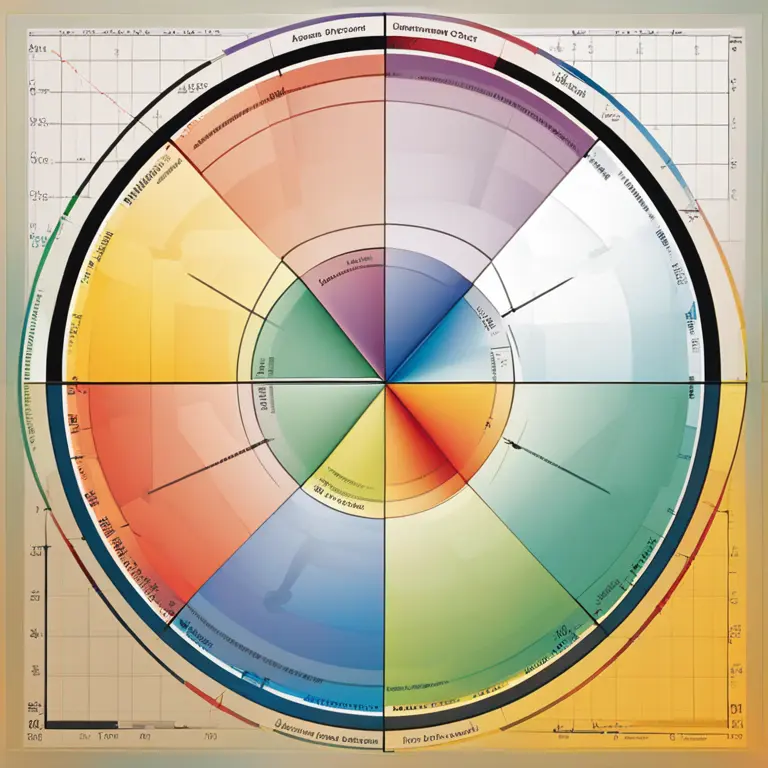
The Basics of Biorhythm Compatibility
Learn how biorhythm compatibility influences relationships and personal interactions, according to modern bio-psychological theory.
article by Adrian Wallace
Introduction to Biorhythms
The concept of biorhythms dates back to the 19th century, yet it remains a fascinating aspect of bio-psychological study into the 2020s. According to the theory, our lives are influenced by biological cycles that affect our physical, emotional, and intellectual faculties. Understanding these rhythmic patterns is believed to enhance self-awareness and can potentially improve interpersonal relationships. Compatibility, according to biorhythm theory, hinges on how well the cycles between two individuals synchronize, which can provide insights into the dynamics of their interactions.

Biorhythmic Cycles Explained
Biorhythms hinge on three principal cycles: the 23-day physical cycle, which affects stamina and coordination; the 28-day emotional cycle, influencing mood and creativity; and the 33-day intellectual cycle, relating to analytical thinking and reasoning. These cycles begin at your birth and ebb and flow in positive (high phase) and negative (low phase) intervals. Charting these can predict periods of strength and vulnerability, theoretically allowing individuals to plan and act accordingly for optimal interaction.

Calculating Biorhythmic Compatibility
To evaluate biorhythm compatibility, one must first chart the biorhythmic cycles of each person using their birth dates as the starting point. With advancements in technology, by 2024, online calculators and mobile applications have made this process nearly instantaneous. These tools can produce visual charts that represent the cycles, enabling users to easily compare their rhythms to another's, finding points of convergence and divergence which are interpreted to reflect potential compatibility.

Compatibility and Relationship Dynamics
Compatibility in biorhythms is not just about similarity but also about the balance of cycles. Two people's cycles might align, suggesting periods where both are physically energized, emotionally receptive, or intellectually sharp. However, opposing cycles might not necessarily spell doom; instead, they might offer a complementary balance. For instance, when one partner is in a low emotional phase, the other might provide strength and support if they're in a high phase.
Critiques and Considerations
Critics argue that biorhythm compatibility is too simplistic and lacks empirical support, urging people to be cautious when using it to make life decisions. Despite the skepticism, it maintains a niche following. Modern enthusiasts suggest that while it may not be a stand-alone predictive tool, it can foster communication and understanding between partners or team members, by providing a nudge towards empathy and timing in interpersonal engagements.
Conclusion and Future Outlook
The digital era has indisputably reshaped our interaction with concepts like biorhythms. The convenience of calculating and interpreting these cycles makes them more accessible than ever. While certainty in the scientific community remains elusive, the continued intrigue surrounding biorhythms suggests that the dialogue on their role in human interaction will endure. As we progress further into the 21st century, the intersection of technology, psychology, and personal well-being may yield new insights into the potential applications of biorhythm compatibility.
Published: 1/25/2024
Modified: 1/25/2024
More predictions
Come back here soon to learn more about yourself and your future


The Basis of Biorhythms: An Insight into Biological Cycles
Delve into the concept of biorhythms, the belief in rhythmic biological processes that purportedly influence human physiology and behavior.


Your Biorhythm Horoscope Handbook
Discover the intriguing intersection of biorhythms and astrology. Learn how tracking your biological cycles can provide insights into your physical, emotional, and intellectual well-being.


The Rhythms Within: Biorhythm Horoscope Insights
Tap into the cosmic wisdom of biorhythms to understand your emotional, physical, and intellectual cycles for enhanced well-being and foresight.